If you are interested in living in a village in Turkey and in owning an income generating property please see our house for sale at Kirazli Village House for sale
This rare stone villa is an established and lovingly maintained home having been lived in year round for seven years. Whilst suited to a multitude of uses including home with art gallery, day spa or yoga studio attached the house currently generates exceptional income over a 10 month season purely by renting out the studio wing to independent travellers exploring the region.
* * * * * * * * * *
Buying a house in the villages off the beaten track in Turkey can be a slow process. I have my own way of doing it and it works for me, or it has so far, with my other village houses.The aim of the exercise is to buy a legal property and to keep us as safe as possible whilst we go through the process.
You need a lot of patience, good humour and above all politeness when you optimistically head out into the villages. Things will go wrong, stated facts will turn out to be incorrect, issues will arise that thwart you and there will be both legal issues and personal issues. Try not to take it personally, it normally boils down to misunderstandings or genuine errors or flourishes of language and it’s your job to check everything you are told and not get cross when it turns out to be wrong!
I do often feel sorry for the emlaks and people we work with when we go into these villages, they are generally just passing on what they have been told and trying their very best. So long as I don’t waste too much money on a buying process that grinds to a halt half way through I’m generally okay with it all. I try not to count my own time in that calculation and work on the basis that I learnt something even if the sale doesn’t happen.
Last week we found a village we particularly liked and we started house hunting in earnest. We visited the village, explored it, loved the houses, were impressed with the infrastructure and the location worked for us being within easy commuting distance of home with excellent roads. The villagers were very friendly, the scenery was lovely, the whole place felt peaceful and settled and well maintained.
We found some properties for sale and having checked the municipality online we contacted the agent who was covering that area. He and his staff where helpful and clear and we liked them and they were obviously prepared to work at this and were not expecting an instant sale from well heeled foreigners.
We did our bit and explained how we buy because it’s only fair to get that established at the start; we like to see the tapu on viewing, if we make an offer which is accepted we will then get the property mapped at our expense and then we’ll pay a deposit which holds the property whilst we go and jump through all the hoops Turkey likes us foreigners to jump through.
Note: Some of these hoops are, allegedly, in the process of being removed. There is a bill before parliament that will make the buying of land for foreign individuals and foreign companies easier and quicker and the process clearer. But as of now, March 2012, the acquiring of various permissions is still in place.
We always get properties mapped because whilst the tapu states a square meterage it’s exact location can be forgotten or misunderstood and geography changes over time and land slips and fences get put up or taken down and trees grow and the boundary as the owner believes it to be can become blurred. Also, sometimes people hold many title deeds and they can become confused as to which relates to which property and so we need to be sure that the tapu we are being shown actually is the property we are looking at! So if we like somewhere and want to buy it and a price is agreed we consult the imari plan which is held in the municipal centre and then we get the property mapped officially. We would need a copy of the map later anyway as it’s one of those hoops we jump through when bringing new real estate into our company.
So we’re ready to view houses. I won’t bang on for several more thousand words on how viewing went, it was fascinating and fun and sad as ever. We looked at something in the region of ten properties and here are a couple of examples just to give a rough idea of how things went.
Essentially we’re looking for a pretty, old village house which doesn’t require a total rebuild and which has a large garden and the potential to add additional rental units over time in an organic way.
Case Study One
A small collection of village houses on an advertised 1000m2 of land.Nice elevated location on outskirts of village with good road access and views of mountains and olive groves. The three small houses all need new roofs and superficial exterior renovation and the usual heavy interior renovation but are, on first inspection, sound. The houses are located around two sides of a large open courtyard with various patios.
Potentially this could easily make three rental units and an outside dining and cooking area.
Nick likes it, I don’t; it doesn’t have much in the way of architectural appeal for me, doesn’t have the grace and balance I look for at the start of a project.
We inspect the tapu and the land is actually 680m2 and the owner named on the tapu is dead. Whilst this isn’t a insurmountable issue it means lots of paperwork and checking and the inheritors won’t negotiate on the price even though the land is significantly smaller than they thought.
What would I do next:- If I wanted it I would get it mapped to determine the actual boundaries as opposed to the boundaries they think they have and I’d have to start sorting through the inheritors to ensure every single one of the potential inheritors had been contacted and had given permission for sale. I would have preferred the tapu had been transferred to the inheritors en masse and one had clearly been given power to act on behalf of all. That’s unlikely to happen so I’m going to put this to one side.
What I think:- Actually in situations like this I think a sale is unlikely as there are many inheritors and the chances of them all agreeing on something are slight and there are extended family living in the houses and when push comes to shove chances are they’ll baulk at moving, it could all be problematic. We could very well go all the way down the road on this and have it fail at the very last minute. It’s not my ideal buying situation.
Case Study Two
An extensive property in the main street of the village built around a central courtyard. Part of the property was used commercially in the past. There are limited views of mountains and olive groves from the second floor. There are loads of architectural features to fall in love with. The central courtyard is small but totally private and is currently a garden with fig trees and grape vines.
Nick and I adore it. It could make four rental suites and a two bedroom cottage around a private courtyard, the structure is very sound and whilst the old timbers seem solid we would have to remove them and insulate properly and probably raise the whole roof for head room. Full internal renovation is a given.
The elderly owner arrives with the tapu and an old map, he clearly is eager to sell and the price is negotiable in a sensible way. On initial inspection the tapu looks clean and his having a map in hand is encouraging and likely accurate given the location.
It breaks my heart to turn this property down. It is everything I like in a project but that’s because it’s everything I have done before and the plan this time was for something different. Also, with somewhere in the region of a potential 200+ m2 of internal accommodation I just don’t have the money to do what I would want to do here without selling something else.I feel desperately sorry for the elderly owner, he obviously needs to sell and is clearly upset when we have to decline. Chances are if this property ever does sell it will get knocked down as the building percentage permissions are high in this area and rebuilding in tugla is easier.
What I think:- I’m pretty certain this sale would have gone through if I had pursued it and whilst the price is very good the law of averages says an extensive old property like this is bound to throw up some sort of structural issue that would blow a hole in a tight budget. It’s bigger than I wanted in terms of internal space and to make it beautiful is going to require expensive finishes although the design aspect is clear to me even at first look. The building has such potential. I haven’t totally discounted it because I love what it is but right now it’s a regretful “not this time” as common sense and experience says don’t take on this kind of thing unless you have a very flexible budget.
The search continues but what we do know is this village is good for us, so now it becomes a case of finding the right property in it.
Tips and advice when viewing property in Turkey.
Take loads of photos and make notes including a rough plan if you can – after a while you’ll start to get confused about which house is which and so take lots of pictures, these will also often show up stuff you didn’t notice on first inspection and will give you a point of reference for comparisons at home. Try and include a distant view of the property, that’s often really useful.
Smile a lot and be happy – you’re looking at houses, which is fun, and the serious reflection comes later after you leave. For now look for the positives. Be pleasant to the owners, this is their home; because they probably won’t speak English they will be studying your face and body language, try not to upset them, particularly in the villages these houses will have been in a family for generations, they do actually care who has it next and they are actually proud of it so don’t be mean and make it obvious you don’t think much of their home.
Be patient – this is Turkey, everything is for sale all the time, allegedly, and if the person you are with senses little enthusiasm on your part for what he is showing you he will try harder and harder and you can lose whole days of your life being shown house after house as word spreads around an area that buyers are about and the tea shop drums start beating and every man and his donkey turns up with a piece of land to sell. You are going to have to be patient and trail along behind him and sometimes that last, almost forgotten, suddenly remembered, old property turns out to be exactly what you want but there are ways to make this process easier on your stamina reserves…..see next point.
Be clear, or as clear as you can be given language issues – even when dealing with an emlak who speaks English (and off the tourist track they are few and far between) you will encounter difficulties because the emlak will show you things he thinks you want as opposed to things you do want. If you don’t speak fluent Turkish indicate clearly the things you like when you view a house, be they stone buildings, views, architectural features, whatever. I am often to be found lovingly stroking old bread ovens in gardens and caressing old brick arches whilst obviously muttering nasty Turkish swear words at cement render over kerpic buildings and tugla extensions. Turks are incredibly good at body language and this is the best way to make it clear what you really want and admire in a property.
Never, ever decide on the spot – even if you have fallen in love as soon as you walked through the gate go away and think about it. Reflection is important, particularly at this stage when your heart can over rule your head. I saw a property the other day that I loved, really loved, but it wasn’t what I was looking for in this instance and whilst I believe you have to be flexible the reasons I have for looking for something new remain the same. I am reflecting on it though 🙂
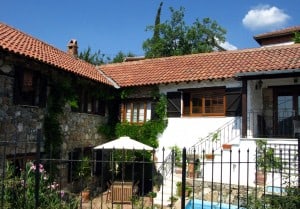
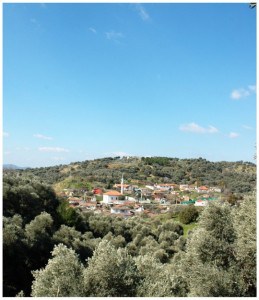
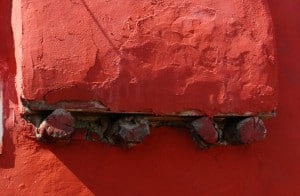

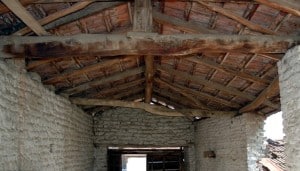
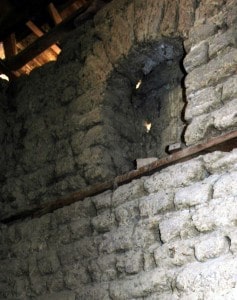
Really great article will be bookmarking this for future use for when we get around to buying our own property. I think a lot of it stands not only for buying in a Village but in Turkey on a whole. There are a lot of people out there in very sorry states for buying on holiday on a whim. Hope this article will help others from falling into the property traps.
Kerry
I’m kinda different from most people who buy here, I don’t buy in the normal places and I don’t buy normal things and so I had to learn much more way back at the begining and I had to learn it step by step myself and really understand why I needed to do certain things. So many issues here boil down to people not actually understanding the process they are going through or how it should protect them and what happens if steps gets missed.
I don’t honestly believe that the majority of issues people come across here when buying are as a result of traps being laid and them falling into them, I think most boil down to carelessness, wishful thinking and misunderstandings and my job in the process is to find anything that could fall into that category and move to alleviate it 🙂
I think it should be fun though, I think if you are sensible house hunting is a joyful, hopeful thing and that is something that seems to have been lost in recent years.
Karen
Great read! Hope we will be buying a house one day in Turkey so will bookmark this for future reference. Although I have a Turkish husband that patience and body language is always key. I love all those old village houses as well. Find it sad how much they are not restored or respected and the huge cement apartment goes up. Anyways good luck!!! You have a great attitude about it all!
Unfortunately a lot of the village houses need a type of restoration that isn’t readily available and/or costs a lot. So many of the old skills have been lost and modern, fast building methods are preferred but patching up an old house with modern methods makes the situation worse – stick a cement covering on a kerpic house and it’s the equivalent of a human wearing a plastic mac in a sauna, the building melts.
Lots of the villagers love their houses, they are really proud of them, but they just don’t know how to go about maintaining them and the building industry here is so geared towards cement and rebar and rubbishing eco building that there is nobody to help them. Some local workshops would help loads but nobody is really interested 🙁
. . a good a useful article – thank you for that – your experience and attitude towards the process is a valuable guide. J and I will be wandering the area I think you are checking out, not house hunting, just love the location. Good luck with the search.
Ahere.s usual, highly descriptive and informative article, which I shall bear in mind should a move to Turkey become probable, following the wrong General Election results here. Keep up the good work!
I would like to congratulate you on an excellent post re buying a property in Turkey. Such downright sensible advice combined with a sympathetic insight into the Turkish character really makes me happy to know there are people like you out there! Thank you for writing this.
This is a really informative post thank you. Always fancied buying a village house but I thought that it wasn’t possible for non Turks to buy property in villages. I’m happy to be wrong.
Well there are villages and villages and not all are banned to individual foreign buyers now, it depends on their zoning and population and location, some places that to our minds are very definately villages in look and feel are actually within a belediye area and are open to foreign buyers, it is only those that are legally Koy and independent that are restricted and that may well change when they enact the new real estate law being debated at the moment. They may well lift the koy land restriction along with the recipricocity thing and the military clearance thing although I expect all such clauses to end up in the constitutional court for a while if that happens, it’s traditional for some party to do that! Interesting times though, everything could change in the very near future.